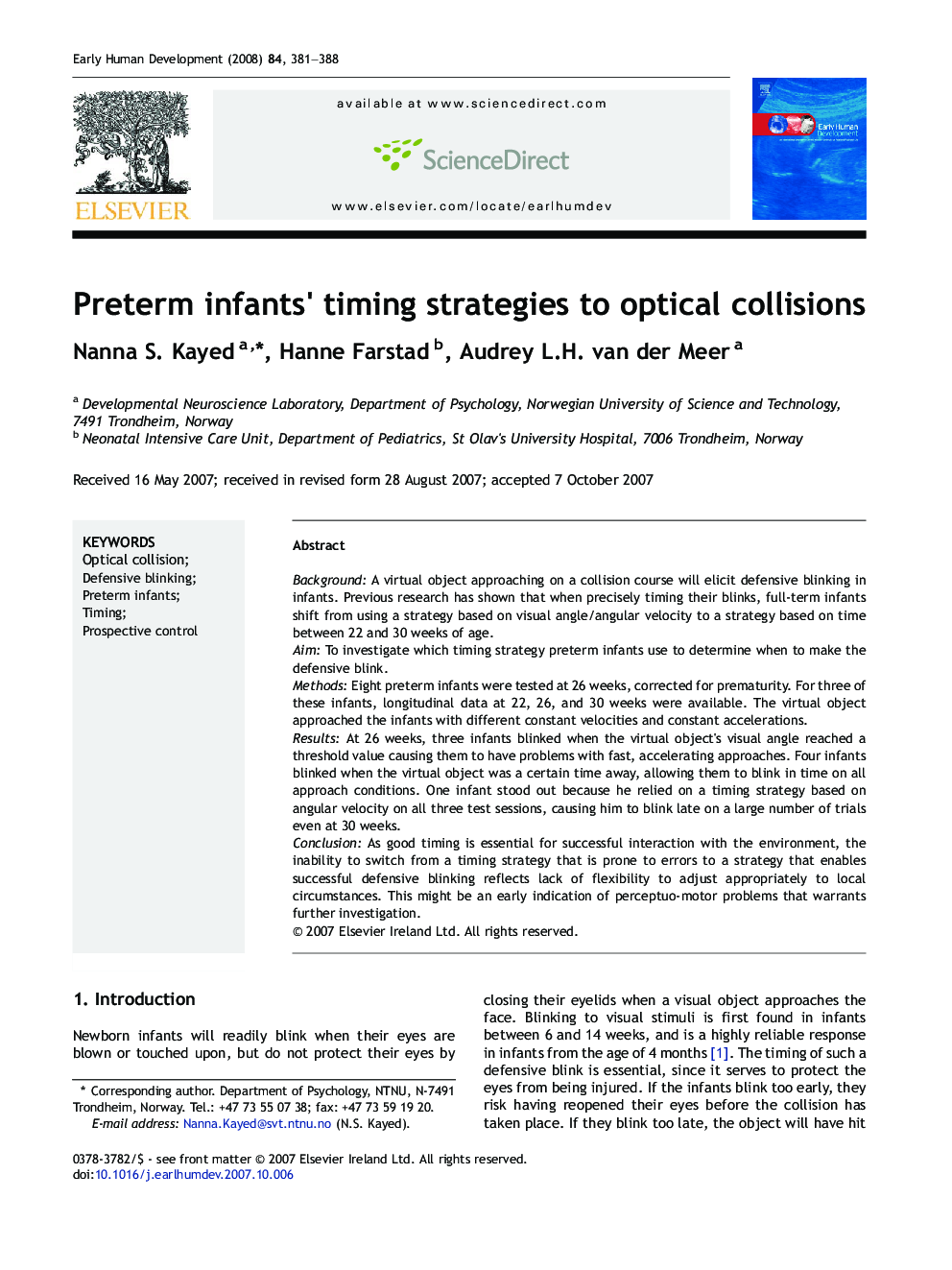| Article ID | Journal | Published Year | Pages | File Type |
|---|---|---|---|---|
| 3918207 | Early Human Development | 2008 | 8 Pages |
BackgroundA virtual object approaching on a collision course will elicit defensive blinking in infants. Previous research has shown that when precisely timing their blinks, full-term infants shift from using a strategy based on visual angle/angular velocity to a strategy based on time between 22 and 30 weeks of age.AimTo investigate which timing strategy preterm infants use to determine when to make the defensive blink.MethodsEight preterm infants were tested at 26 weeks, corrected for prematurity. For three of these infants, longitudinal data at 22, 26, and 30 weeks were available. The virtual object approached the infants with different constant velocities and constant accelerations.ResultsAt 26 weeks, three infants blinked when the virtual object's visual angle reached a threshold value causing them to have problems with fast, accelerating approaches. Four infants blinked when the virtual object was a certain time away, allowing them to blink in time on all approach conditions. One infant stood out because he relied on a timing strategy based on angular velocity on all three test sessions, causing him to blink late on a large number of trials even at 30 weeks.ConclusionAs good timing is essential for successful interaction with the environment, the inability to switch from a timing strategy that is prone to errors to a strategy that enables successful defensive blinking reflects lack of flexibility to adjust appropriately to local circumstances. This might be an early indication of perceptuo-motor problems that warrants further investigation.
